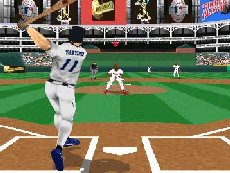-->
- D3d Driver With Hardware Acceleration For Igi Windows Xp Windows 10
- D3d Driver With Hardware Acceleration Free Download For Igi Windows Xp
- Hardware Acceleration Firefox
- Download D3d Driver With Hardware Acceleration


D3d Driver With Hardware Acceleration For Igi Windows Xp Windows 10
- The Microsoft Direct3D device driver interface (DDI) is a graphics interface that allows vendors to provide hardware acceleration for Direct3D. The interface is flexible, allowing vendors to provide Direct3D acceleration according to hardware capabilities. Driver writers implement the Direct3D DDI as an integral part of the display driver.
- DirectX features issues: Harware Acceleration &/or D3DERR- notavailable Hi. I have installed my new AMD Radeon HD 6450 graphic cards, Installed AMD Catalyst tool version 13.4 to get latest driver. Windows XP / Devices & drivers; Replies (13). ' An application has failed to start because DirectX hardware acceleration is not.
D3d Driver With Hardware Acceleration Free Download For Igi Windows Xp
Move the Hardware Acceleration slider to right. Restart your system if prompted. Step 2: Enable Direct3D or DirectDraw Below are some steps through which you can enable Direct3D or DirectDraw. Click on Start| Search Box| Type “dxdiag”| Enter. Enter Admin login and password if prompted. In Windows XP: 1.
The Microsoft Direct3D device driver interface (DDI) is a graphics interface that allows vendors to provide hardware acceleration for Direct3D. The interface is flexible, allowing vendors to provide Direct3D acceleration according to hardware capabilities. Driver writers implement the Direct3D DDI as an integral part of the display driver.
This section describes the Direct3D DDI, and provides implementation guidelines for Direct3D driver writers. It is assumed that the reader is familiar with the Direct3D and Microsoft DirectDraw APIs, and that the reader has a firm grasp of the Windows 2000 display driver model, including the DirectDraw DDI.
All Direct3D drivers for Windows 2000 and later must conform to the Microsoft DirectX 7.0 or later Direct3D driver model. The DirectX 8.0 driver model is supported in Microsoft Windows XP.
Driver writers who are creating Microsoft Direct3D drivers for Microsoft Windows 2000 and later should use the following header files:
d3dnthal.h
Contains prototypes for callbacks that are implemented by the driver and definitions for driver-level structures. The D3DHAL_DP2OPERATION enumerated type is defined in this file. This header is included in winddi.h, which must be included in all Windows 2000 and later display drivers.
d3dtypes.h
Contains Direct3D type definitions used by both applications and drivers. Except for D3DHAL_DP2OPERATION, all other Direct3D enumerated types are defined in this header.
d3dcaps.h
Contains structures and definitions that describe capabilities of various aspects of Direct3D drivers.
dx95type.h
Allows driver developers to write driver code that is portable between Windows 2000 and later and Windows 98/Me.
ddrawint.h
This header file, which is included in winddi.h, is required to develop the Microsoft DirectDraw portion of a display driver.
All of these header files are shipped with the Windows Driver Kit (WDK). Previous Driver Development Kits (DDKs) also provide sample code for a Direct3D driver in the Perm3 video display directory.
Note The Microsoft Windows Driver Kit (WDK) does not contain the 3Dlabs Permedia2 (3dlabs.htm) and 3Dlabs Permedia3 (Perm3.htm ) sample display drivers. You can get these sample drivers from the Windows Server 2003 SP1 DDK, which you can download from the DDK - Windows Driver Development Kit page of the WDHC website.

Reference pages for Direct3D DDI functions, structures, and enumerations can be found in Direct3D Driver Functions, Direct3D Driver Structures, and Direct3D Driver Enumerations.
The primary reference for SDK-related aspects of the Direct3D interface is the Microsoft Windows SDK documentation. Computer Graphics: Principles and Practice by Foley, van Dam, Feiner, and Hughes, which was published by Addison-Wesley, is a useful general graphics reference.
Related Articles
- 1 Wrap Text in Microsoft Excel 2003
- 2 Open a PYM File
- 3 Find a DSL Modem's IP Address
- 4 Set a Kindle Fire HD to Factory Defaults
Hardware acceleration enables you to shift the audio tasks from the CPU to the sound card so that the CPU isn't slowed down by audio requests and so that games and other audio-intensive applications can take full advantage of the sound card's features and capabilities. However, if you encounter unwanted noise or find that computer performance is negatively impacted, you can try turning off hardware acceleration to address the problem. Windows supported the ability to manually turn off hardware acceleration in a sound card until the release of Windows Vista. Subsequent versions of Windows do not have an option for this.
1.Click 'Start | Control Panel | Sounds, Speech and Audio Devices | Sounds and Audio Devices.'
Hardware Acceleration Firefox
2.Select the 'Audio' tab and then click the 'Advanced' button. Click the 'Performance' tab to select it.
3.Locate the hardware acceleration slider. Set hardware acceleration to 'None' by moving the slider all the way to the left. Click 'OK' twice and close the Control Panel window.
Warning
- The information in this article applies to Windows XP and earlier versions.
References (5)
Resources (1)
About the Author
Steve McDonnell's experience running businesses and launching companies complements his technical expertise in information, technology and human resources. He earned a degree in computer science from Dartmouth College, served on the WorldatWork editorial board, blogged for the Spotfire Business Intelligence blog and has published books and book chapters for International Human Resource Information Management and Westlaw.
Cite this Article